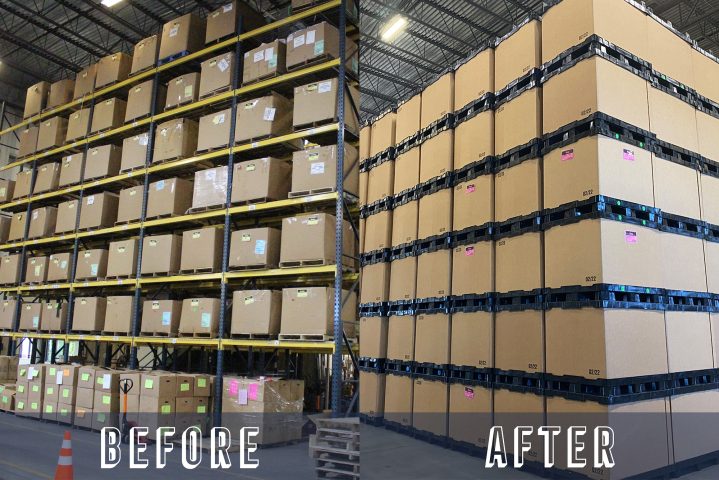News
Goodwill unboxes a huge investment in sustainable materials this Earth Day
April 22, 2022

This Earth Day, Goodwill Northern New England is reducing waste by investing $1.5 million in new methods of storing and transporting clothing and household donations. For years, the nonprofit used big cardboard boxes and wooden pallets to move items, and large metal racks to store the boxes. Starting this week, Goodwill now will use much more sustainable materials that are safer for employees, waste less material, and save money by being so durable. Goodwill expects this sustainability project to pay for itself in less than three years.
Every single shirt donated to Goodwill goes into one of these cardboard boxes before hitting a sales floor — the scope of this project is huge.
“Our donation centers and warehouses use tens of thousands of these large cardboard boxes each year,” said the Senior Vice President of Retail, Logistics, and Supply Chain Operations. “This investment will improve the work environment for our teammates, and reduce our expenses and carbon footprint. By reducing expenses, we can invest more in Goodwill’s programs that help people achieve their life and work goals.”
Goodwill Northern New England handles between 50 to 60 million pounds of donations every year, diverting those items from landfills in Maine, New Hampshire and Vermont. This new investment is part of Goodwill’s larger sustainability plan in its retail operations. In 2017, the nonprofit voluntarily banned single use plastic bags from its stores. In 2021, it upgraded its fleet of tractor trailers to reduce its carbon footprint.
“Sustainability is a core value at Goodwill — we’re all about reuse, after all. It hurt to see so many broken wood pallets, and busted open cardboard boxes go to waste. When we learned about these sturdier materials, it made sense to try to do right by the Earth, our employees and the people who donate shirts, books, and shoes to us by investing in this greener path,” said Rich Cantz, President and CEO of Goodwill NNE.
The nonprofit spent $500,000 a year to replace broken cardboard boxes and wood pallets. The boxes could not stack up very high, because they became fragile and would burst open at the seams. The new materials stack high and without any shelving. The new materials stack together like Lego. This space savings means Goodwill can fill its trucks, which will reduce transportation emissions and costs. It also means warehouses and the sorting area in the back rooms of every Goodwill store will be safer and can hold more donations in these sturdier materials.
“About a third of each truck we sent to stores was empty space because of how delicate the old boxes are – you can’t stack them to fill the room without them breaking,” Cantz said. “These new materials will let us truly fill our trucks, which is much better for the Earth.”
Goodwill is phasing in these changes. Any still-useful boxes and pallets will be used until there are none left.



